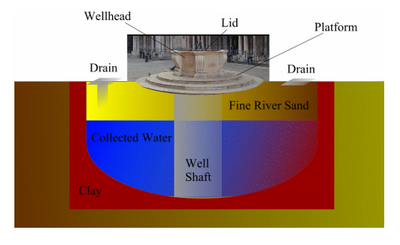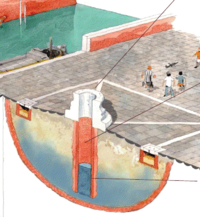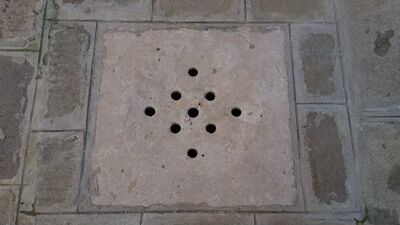Well
This page contains information about a typical Venetian well.
A well

History
As a series of islands surrounded by a salt-water lagoon, Venice lacks natural sources of freshwater. As a result, Venice has found alternative ways to obtain freshwater for the city. As far back as the 6th century, Venetians built well systems to collect and filter rain to be stored as freshwater.
Structure
A typical well has an underground cistern, a well shaft, drains and a layer of fine river sand between the cistern and the pavement.

Well Shaft
While functioning as Venetians main water supply, the actual well shaft that extended from the wellhead to the cistern was made from bricks and lined with a layer of impermeable clay.
Cistern
The cisterns were made with large stones and then lined with impermeable clay that prevented the fresh water from leaking out and more importantly prevented salt water from leaking in and contaminating the water supply.
Drains
The drains were built in order to collect rain water. Typically there are two or four drain equally spread out around the wellhead. The image below shows a picture of a drain.
Current Water Supply
Venice is now supplied with water from the mainland, traveling underground through pipes from the commune Trebaseleghe which is filled by 120 artisan wells.
- ↑ Blackwell, Lewis et al. Preserving Venetian Wellheads. 2000. Pg 21
